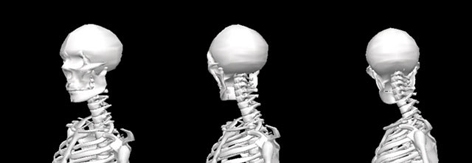It is claimed that human factors researchers and ergonomists could use this model to investigate the effect of head-neck posture on human response, performance, human machine interaction, and injury risk in whole-body vibration.
‘Studies have shown that awkward head-neck postures inside whole-body vibration environments can increase discomfort and the risk of injury,’ said Salam Rahmatalla, associate professor of civil and environmental engineering and research engineer at the Virtual Soldier Research (VSR) program. ‘The goal of this project is to introduce a computerised human model that can be used to predict human motion in response to whole-body vibration when the human takes different head-neck postures.’
Rahmatalla is lead author of a paper entitled Human head-neck models in whole-body vibration: Effect of posture, that has been published online in the Journal of Biomechanics.
Rahmatalla conducted the study by having 11 male participants sit in a vehicle simulator where they were subjected to white-noise random vibration and the acceleration data of the head and neck for each was recorded.
The recorded motion data was then used to calibrate the computer human model.

In a statement he noted that the predicted motion data of his current model can be used to drive more sophisticated computer human models — with muscles and internal tissues — that can predict muscle forces and internal strain and stress between tissues and vertebrae.
Significantly, the computer program may reduce the need for human subjects to drive test vehicles.
‘One major benefit of the current computer human model is the possibility of using it instead of humans in the design/modification loop of equipment in whole-body vibration,’ he said.
Rahmatalla added that a variety of industry, university, and other researcher venues likely will learn from his work.
‘The automotive industry, and manufacturers of heavy machinery including construction, agriculture, mining, and military vehicles can benefit from the application of this model to the design of their equipment,’ he said.
Rahmatalla’s long-term VSR objective is to develop a virtual human capable of reproducing complex human responses to a whole body vibration environment that will help answer questions related to potential injury risks and design modifications.




Red Bull makes hydrogen fuel cell play with AVL
Formula 1 is an anachronistic anomaly where its only cutting edge is in engine development. The rules prohibit any real innovation and there would be...